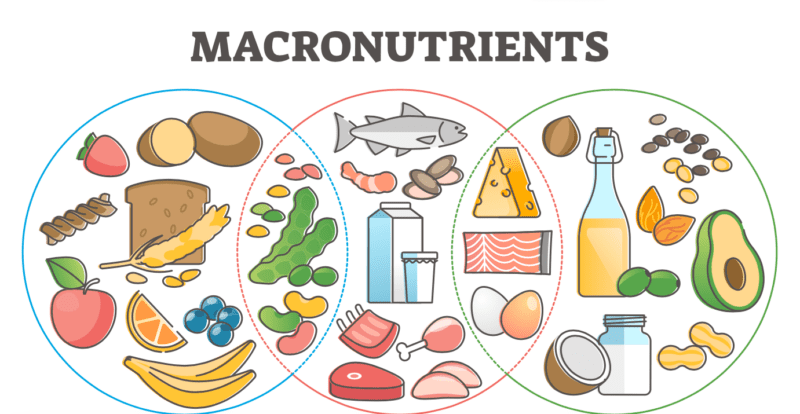
Food n’ Fitness go Hand-n’-Hand
This article was written by Courtney Middle, a student in our Dietetic Internship program.
Nutrition can make or break your fitness goals and workout routines. How well or poorly the body is nourished can have an immense effect on the quality of your exercises and your overall physical health. A well-balanced diet is the best “diet” for optimal health, ensuring to include all macronutrients such as carbohydrates, protein, and fat into everyday meals, which is going to best fuel your body.
Carbohydrates
Although carbohydrates get a bad rap on many fitness recommendations, they are a crucial macronutrient to include in every single meal. Carbohydrates are the body’s main source of energy, which means the body would not be able to function without them. Carbohydrates get stored as glycogen (a form of carbohydrates) in your muscles, which is the first source of energy your body uses during exercise (Gollnick, P.,D, 1984). In addition to adding them into your everyday diet, it can also be beneficial to consume a small amount of a “simple carbohydrate” 30 minutes before training to ensure your muscle glycogen stores do not deplete before workout completion. Simple carbs are a type of carbohydrate that can be easily and quickly digested by the body and be used as energy right away. It includes any kind of fruit, juice, energy drinks, or energy bars. A whole piece of fruit will have more nutrient density compared to other simple carb choices. It is also imperative to consume a carbohydrate-rich meal after a workout to replenish lost glycogen stores such as pasta, sandwiches, potatoes, etc. Doing this will help with muscle recovery and help with post exercise muscle fatigue (Alghannam, 2018).
Protein
Protein is important to include in your diet consistently because they help with muscle mass, function, strength, and recovery (Beerman, 2021). The amount of daily protein varies from person to person depending on their age, gender, type/intensity of exercises, and overall fitness goals, however, the RDA is 0.8g/kg per day for healthy individuals. For example, a 140 pound individual would need about 50g of protein per day (140/2.2=63.6 X 0.8=50.9g of protein). Complete proteins are protein substances that contain all nine essential amino acids, while incomplete proteins contain only some, not all. Your body produces some amino acids, but the ones that cannot be produced, must be gathered from food. Since complete proteins have all essential amino acids that the body cannot produce, they will have a greater effect on muscles, and you will need less of it to see results. Examples of complete proteins are most foods that come from animals that include beef, chicken, eggs, and cheese. One ounce of poultry contains 7g of protein, and a usual portion size is about 3oz, meaning an average portion of chicken, ham, or turkey will have 21g of protein out of your total needed for the day.
Fat
Although fat isn’t the most important macronutrient in relation to fitness, it does have an impact on certain kinds of workouts. For example, it was mentioned above that muscle glycogen is the body’s first energy source for quick, intense workouts. However, for long, moderate workouts, fat storage is the main source of energy. Some examples of a moderate workout would be a brisk walk at 4mph for about 45 minutes or biking 10-12mph for 45 minutes. Moderate workouts can also include activities of daily living such as heavy, intense cleaning (vacuuming or mopping) or mowing the lawn for long periods of time (Harvard College, 2023). Because of this, it is important to include fats in your diet, making sure to emphasize healthy fats such as mono and polyunsaturated fats to minimize a potential risk for cardiovascular disease. Some examples include olive oil, avocados, fish, and nuts/seeds.
In conclusion, it is important to eat a well-balanced diet consisting of carbohydrates, protein, and fats to ensure your bods fully fueled and nourished to perform to the best of its ability. Here are great examples of well-rounded meals and snacks that would be great to include during your fitness journey:
| Time/When | Food Example |
| Pre-workout snack ideas | Peanut butter and banana toast
Yogurt and berries Cheese and Crackers |
| Post-workout meal ideas | Chicken Pesto Pasta with asparagus
Roast Beef with Potatoes and Carrots Salmon with Rice and Roasted Zucchini |
References
Alghannam, A. F., Gonzalez, J. T., & Betts, J. A. (2018). Restoration of Muscle Glycogen and Functional Capacity: Role of Post-Exercise Carbohydrate and Protein Co- Ingestion. Nutrients, 10(2), 253. https://doi.org/10.3390/nu10020253
Beerman, K. (2021, July 26). Dietary protein and exercise: Is there a winning combination? American Society for Nutrition. Retrieved February 20, 2023, from https://nutrition.org/dietary-protein-and-exercise-is-there-a-winning-combination/
Gollnick, P. D., & Matoba, H. (1984). Role of carbohydrate in exercise. Clinics in sports medicine, 3(3), 583–593.
The President and Fellows of Harvard College. (2023). Examples of Moderate and Vigorous Physical Activity . Hsph.harvard.edu. Retrieved February 23, 2023, from https://www.hsph.harvard.edu/obesity-prevention-source/moderate-and-vigorous-physical-activity/
